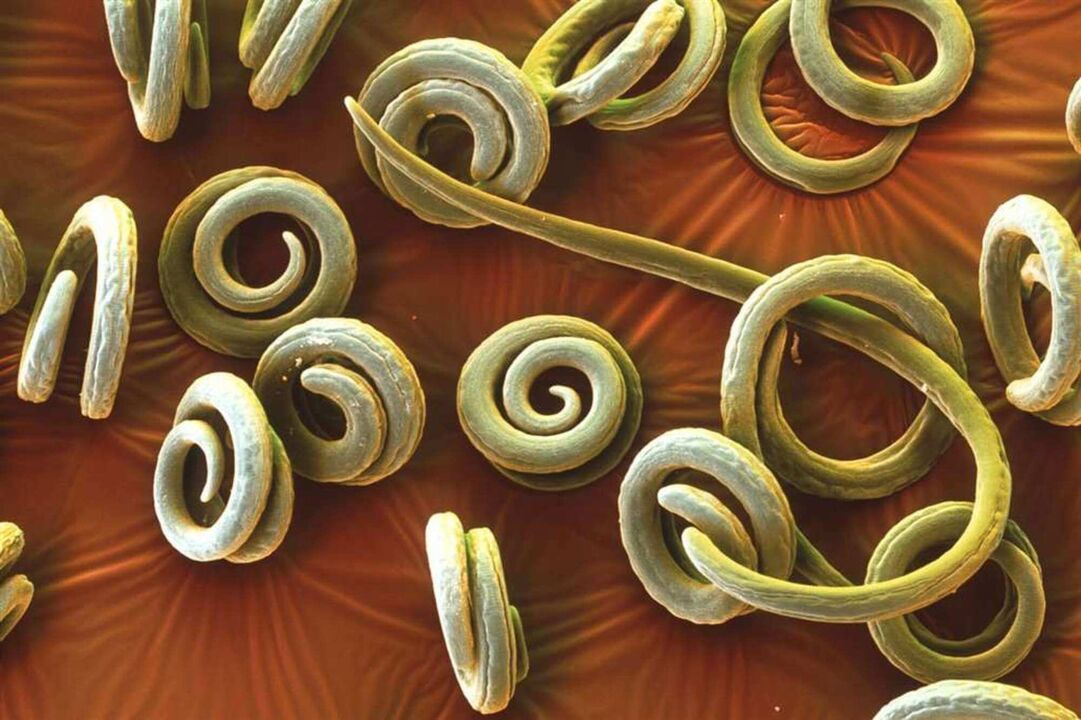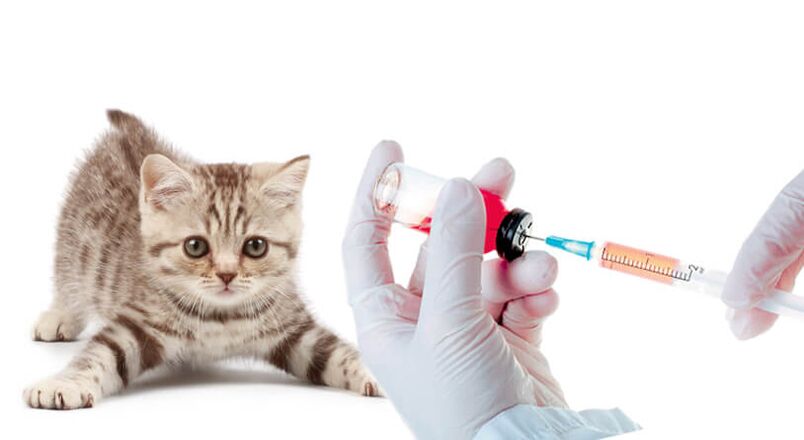About 250 species of worms pose a threat to the health of adults. Helminthiasis develops due to parasitic infection. The vital activity of worms in internal organs can lead to severe allergies, vitamin deficiencies, pancreatitis. Populations of all age groups are susceptible, but children have higher rates of infection.

Most types of worms are inside the body, only there they lay their eggs and die after a while.
Parasite forms and their developmental characteristics
According to the distribution method, the main parasite groups can be distinguished:
- Biological worm. Over the course of the development cycle, several owners changed. These include tapeworms, nematodes, and Echinococcus.
- Soil worms. Able to spread without an intermediate host, but can spread through soil. A person became infected by eating unwashed vegetables and fruits. Main representatives: roundworm, whipworm, hookworm.
- Worms spread by contact with an infected person. This group includes pinworms and dwarf tapeworms.
More than 150 worms are known to be registered in humans.
The location of the parasite in the body is also different:
- Tissue affects the internal organs and tissues that make up its composition;
- The cavities live in the intestinal lumen and absorb the nutrients the body needs.
In appearance, worms are divided into 3 groups:
- roundworms;
- flatworms;
- lucky.
Parasitic Infection Methods
In most cases, parasites enter the host organism by:
- Worm larvae or eggs, along with feces, end up in soil or water, infecting people when eating unwashed food or raw liquids. During summer vacations, the potential for intrusion through bodies of water increases.
- Through contact with sick people or shared objects. This distribution pattern is typical for pinworms. At night, the female leaves the anus to lay eggs. This process can cause severe itching, so the eggs can remain on the hands and underwear. Subsequently, they indulge in a healthy person.
- Tapeworms can be contracted by eating raw and under-processed meat. Tapeworms of this species infect the muscle tissue of intermediate hosts including cattle and pigs.
- The insect's limbs can carry eggs and worm larvae, increasing the potential infestation area.
The life cycle of the vast majority of parasites involves the release of large numbers (millions) of eggs, which after a certain time enter the human body, becoming larvae.
The development of parasites in the human body can lead to acute and chronic forms of the disease. The acute form is characterized by marked symptoms that persist for up to two months. If left untreated, chronic invasion can be observed throughout a person's lifetime.
Main types of worms that inhabit humans
Each form of the microbe is characterized by lesions in an organ and corresponding symptoms. However, all parasites are bound together by means of obtaining nutrients -- at the expense of the host organism. At the same time, a person's metabolism is disturbed, and anemia and other types of diseases develop.
There are different forms of worms:
- Ascaris is a large white nematode up to 20 cm long. The adults live in the small intestine and the larvae can reach the lungs through the circulatory system. They are soil worms that can become infected when eating unwashed vegetables, fruit and water. Parasite eggs can also accumulate on the sand.
- Pinworms are small worms that can be seen with the naked eye after defecation. Distribution area - the lower part of the small intestine. Under the influence of parasites, enterobiasis is formed. The cause of infection is contact with an unhealthy person. This is common in children under the age of 14.
- Tape worms. These include the bovine and pork tapeworm, the broad tapeworm. Being hermaphrodite, they are characterized by the ability to rapidly increase their population. Their bodies are made up of many parts, containing the reproductive system and thousands of eggs. Depending on the type of parasite, different diseases are formed. It is confined to the small intestine and damages the epithelial mucosa. Builds up in the intestinal lumen and can cause it to become blocked. Infections can occur when you eat undercooked beef, pork, or fish.
- Vlasoglav - a round worm that looks like a back with thickened hair. Due to the peculiarities of its structure, it penetrates into the blood vessels and feeds on tissue fluids. Lack of treatment can lead to a decrease in the body's resistance to infection and cancer. The source of intrusion is unwashed product.
The insidious thing about helminthiasis is that it successfully disguises itself as other diseases.
The development of the parasite from the egg into a sexually mature individual occurs within three weeks. During this time, symptoms may be absent or manifest in mild forms. If left untreated, the dense proliferation of worms can cause the disease to become chronic.
Disease Signs of Parasitic Infection
The main symptoms of a worm infection are:
- weakness and fatigue;
- intestinal pain;
- Constipation alternates with diarrhea;
- swelling of the face or body;
- Inflamed lymph nodes, coughing, and choking;
- a rash that causes itching;
- joint pain.
The topic of parasites is unpleasant and scary, so many myths about these pests have emerged.
The consequences of a worm infection are often disguised as other diseases. The difference between pathology lies in the specific signs of bodily dysfunction. Depending on the type of worm, there may be:
- Increased salivation, slightly elevated temperature, urticaria with ascariasis;
- When infected with pinworms, frequent urination, sleep disturbance, belly button pain;
- nausea, vomiting, pale skin, tapeworm hypotension;
- Yellow sclera, dizziness, heavy liver, body aches when trematodes invade.
It is important to detect worms in time with the help of tests and to treat them effectively.
The symptoms of helminthiasis directly depend on the type of parasite, its location in the body and the intensity of the infection.
Material sampling method for detection of intestinal parasites
The primary analysis that will allow you to accurately diagnose the presence of worms is the study of stool. On the day of stool collection, deliver the material in sterile containers to the laboratory. The use of laxatives and urine into the material is not acceptable. Stool containers should be stored in a refrigerator at 4-5 degrees until sent to the laboratory.
In addition, the following tests may be specified:
- immunological tests;
- blood and urinalysis;
- scraping from the vagina of women and girls;
- sputum examination when coughing;
- Ultrasound and endoscopy;
- Bile analysis.

An ELISA blood test is an effective way to detect worms in the body.
A person may be infected with one or more worms. Often, the presence of a single individual in the body is characterized by the absence of symptoms. An increase in the number of worms can cause severe damage to the internal organs, which is responsible for poor health. Symptoms of the disease worsen at night, which also affects resistance to parasites.
Treatment for worm infestation
Specialized drugs affect different groups of worms. Medications can be used in both infection and prophylactic situations. Medicines should only be prescribed after determining the type of worm that hit the body.
Adult roundworms and roundworms are destroyed by drugs containing mebendazole, which block the worms' ability to eat and reproduce.

Modern helminth pills are divided into three groups based on the parasite's susceptibility to the drug.
Vlasoglav is affected by formulations containing mebendazole and albendazole. Iron-containing preparations are necessary to eliminate the consequences of rectal prolapse.
The course of treatment is strictly prescribed by the attending physician. Self-administration of the drug is not acceptable due to various contraindications.
Use of Traditional Medicine
The most common worm medicine is pumpkin seeds. They are eaten in the morning on an empty stomach, ground and honey added. The recommended dose is approximately 300 grams per hour. After taking it, it is necessary to clear the stomach with laxatives.
Various decoctions and infusions have demonstrated their effectiveness:
- Tansy;
- gentian yellow;
- Helichrysum Sandy;
- garlic.

For both preventive and therapeutic purposes, folk remedies for adult worms are recommended.
A decoction of wormwood is recommended as an enema. Fresh grass juice mixed with alcohol can be used. Carrots and their juice also kill parasites.
Worm preventive measures and their effectiveness
Cleaning your hands is the most effective way to protect children and adults from any type of parasite. Concepts and rules of personal hygiene should be formed in children from an early age. A healthy lifestyle can also help reduce the likelihood of getting sick.
Purified or boiled water should be available 24/7 to eliminate the possibility of drinking contaminated liquids. Vegetables and fruits are best washed with boiling water.
Care must be taken when dealing with animals. Pets must be treated for a variety of parasites, both external and internal. Don't forget routine vaccinations for dogs and cats.

Getting vaccinated will minimize the risk of losing a family member to a common disease.
Preventive medicines prescribed by your doctor can be used. Worm infections can develop into dangerous diseases, so it is important to minimize the risk of worms entering the body.

















































